How I Do It – AAC in General Education: Incorporating Peer Modeling

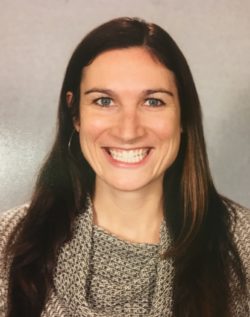 Looking for examples of how AAC is successfully incorporated into inclusive education? Today, we head to upstate New York to learn from AAC SLP Sarah Gregory who shares her experiences in supporting students in general education settings. In this post, Sarah shares her ideas for using peer modeling to support AAC learning.
Looking for examples of how AAC is successfully incorporated into inclusive education? Today, we head to upstate New York to learn from AAC SLP Sarah Gregory who shares her experiences in supporting students in general education settings. In this post, Sarah shares her ideas for using peer modeling to support AAC learning.
Enjoy!
::::::::::::::::::::::::::::::::::::::::::::::::::::::::::::::::::::::::::::::::::::::::::
AAC in General Education: Incorporating Peer Modeling
Authentic inclusion of students with Complex Communication Needs (CCN) or non-speaking students is essential and can also be difficult to achieve. One of the most effective strategies I have found is involving all students in AAC learning. Folks in my district started a peer modeling program a few years ago and we found this to be a powerful tool in achieving our goals for academic inclusion and social belonging. In this blog post, I will outline the why and the how of our current peer modeling program.
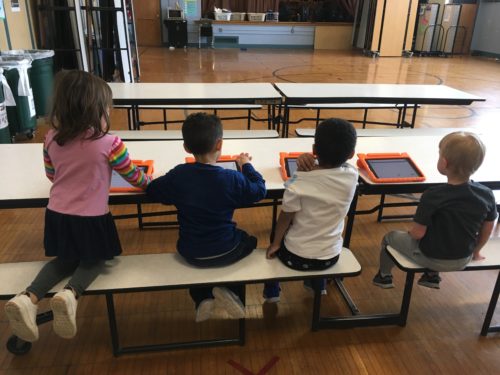
WHY
Authentic inclusion: Inclusion is not just about being present in a room, it is about every student having a true sense of belonging in the classroom community. By teaching all students to use AAC and strategically using it as part of academic lessons, we observed an increase in the social inclusion of students using AAC.
Training communication partners: One of the biggest barriers to effective AAC use is… other people (check out the interview linked below with Alyssa and endever*). We have to train folks to be effective communication partners. When all students in the classroom were familiar with an AAC system we saw an increase in communicative initiations and responses with non-speaking students. This built capacity to support AAC learners throughout the day, beyond therapy time.
Increase in social advocacy: After introducing peers to AAC they began to take responsibility for making sure the AAC device was available to the student. Rather than hearing “Jon doesn’t talk” I started hearing things like “I use my voice and Jon uses a device” (in preschool!).
Inclusion is not just about one student: Our goal is an authentic learning experience for all students, not an exercise in empathy. It should be clear how all students in the classroom are benefiting from the peer modeling program. One way we do this is by linking learning targets of the peer modeling lessons to Common Core Standards.
AAC as a tool for Universal Design for Learning: By providing universal access to AAC we have identified more students who could benefit from the support of a symbolic language system. This has prevented me (the well-intentioned SLP) from being a “gatekeeper” so to speak, a term borrowed from Dana Nieder’s blog post. Meaning I am not the one who decides who gets access to AAC, it is available to support all students.
The payoff: This inquiry method produces self-directed, self-motivated learners who help each other grow. Confusion (an important part of the learning process) is addressed immediately and the teacher/therapist can become “the guide on the side.”
HOW
Getting Started
- Have at least one additional device for peers to use. You can also use a low-tech board or screenshots from a student’s AAC system.
- Don’t use a student’s personal AAC device for peers to learn on (they may eventually model on it, depending on the student/friend dynamic).
- The structure of the group can vary. It will be less daunting if you can fit it into the established classroom structure.
- Accept total communication. No matter how a student initiates/responds, accept that form of communication. You can encourage the student to repeat the answer, model the utterance yourself or ask another peer to model.
- Give explicit instructions on how to be a good communication partner (“Rya is still learning how to use the communication device, we need to wait for her”).
- Have staff join and take a turn (training ALL of the communication partners in the room).
- Encourage growth mindset by talking through navigation new vocabulary (“Oops, that’s not what you meant to say? Let’s delete it, how can we do that?”).
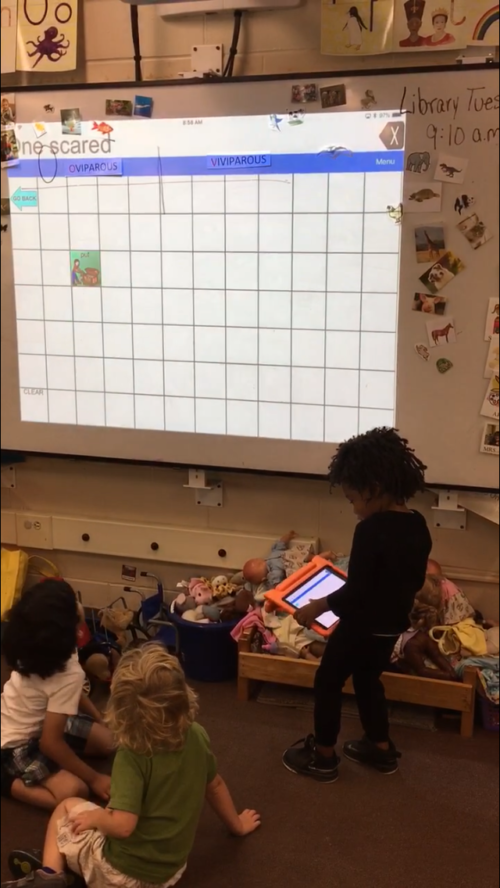
Example: Circle Time/Whole Group
- Make a vocabulary set on the AAC device or visual supports for target words and introduce them at the beginning of the lesson.
- Ask the students “how are you feeling today?” (Any question that fits with your curriculum or morning meeting routine).
- Each student responds on the device. Again, accept any mode of communication and then redirect to the device (“It looks like you are making a sad face. This is how you can say sad on the talker”).
- Respond to each student (“I’m sorry you’re mad!” “why are you happy?”). This shows students that all forms of communication are valid.
- Allow students to pass (no, stop, finished, don’t like). Protesting is an important skill!
- Encourage students to demonstrate for the class (“Wow! Sage said excited, can you show everyone how you said that?”). I have seen an SLP-to-be in kindergarten who could model upside down!
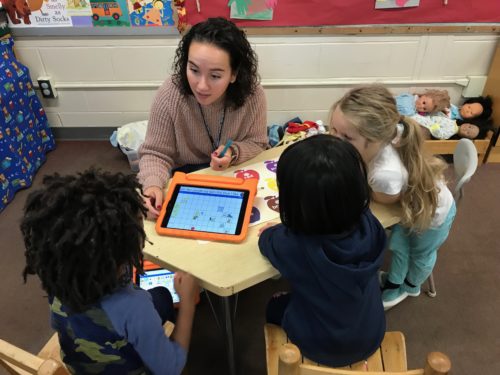 ‘
‘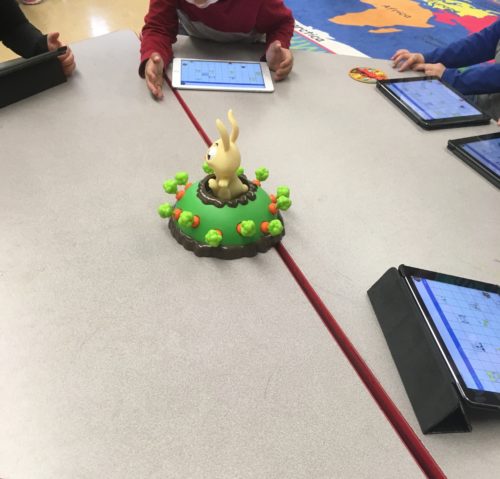
Example: Small Group/Station Teaching
- Use an age appropriate, motivating game. More fun = More buy in! In younger grades I love turn taking games with a surprise at the end (Jumping Jack, Pop the Pirate, Pop up Pig, Shark Bite, Perfection).
- Students and staff take a turn by requesting (my turn), commenting (fun!), directing (take out).
- Use the app WordToob to introduce target vocabulary. The app allows you to create a board with icons (screenshot from device) that link to short video clips. This is a great way to incorporate that high tech motivation if you are using low-tech boards. Students can also make their own WordToob videos for target vocabulary to get them more authentically involved in the teaching/learning.
- Model target vocabulary during the game and encourage participants to model for each other.
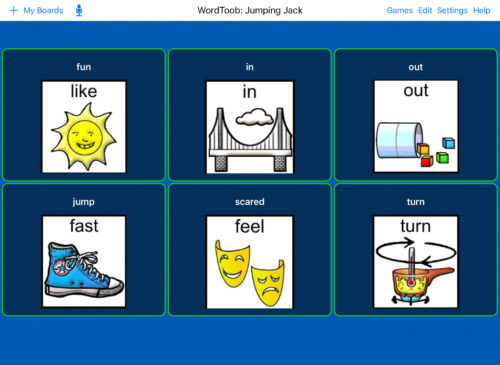
Funding
- Additional devices are expensive. We use iPads with an app that mirrors the device of the AAC user and purchase licenses in bulk. Before you request additional time or money, show administrators and members of your team what amazing things you are doing. Invite them into your room or share on social media and tag your school/admin. Check with multiple funding sources such as your building principal, Special Education Department, Parent Teacher Organization, local college/universities or local grants.
- Check out this PrAACtical AAC post on how to obtain AAC apps for free
- Use the free version of GoTalk Now and import symbols to make it similar to a student’s AAC system (you don’t need to make a robust system, but it can do the job for peer modeling purposes) . Click here for more information.
- Start with low-tech and gather data to substantiate your request for high-tech.
Time
- These groups don’t necessarily fit into a Medicaid billing model. In some cases, I add an indirect session to the IEP to account for this time. For students who receive a high frequency of service, changing a direct session to an indirect/consult could be just as beneficial as you are building the circle of support.
- An AT/AAC consultant may have time to run peer modeling groups. This is a creative way to fit in student observation and job-embedded professional development at the same time.
In summary, the incorporation of peers in AAC learning is a powerful tool to achieve authentic inclusion of all students. This will help build capacity in the circle of support and increase the sense of belonging for all students. As your work toward the inclusion of students with CCN or non-speaking individuals, I encourage you to listen to the perspectives of AAC users and their families. The following interviews are a great place to start:
About the Guest Author: Sarah Gregory, M.S. CCC-SLP is a Speech-Language Pathologist and Assistive Technology consultant in the Ithaca City School District in Upstate New York. She specializes in Augmentative and Alternative Communication in a public school setting with a focus on inclusion. She received a bachelor’s degree from Ithaca College, a master’s degree from The University of Rhode Island and an Assistive Technology Specialist certificate from The University of California at Dominguez Hills. You can reach her at sarahgregory212@gmail.com or on Twitter @SGregorySLP
Filed under: Featured Posts, PrAACtical Thinking
Tagged With: classroom, Inclusive Education, peer supports, Sarah Gregory, school
This post was written by Carole Zangari


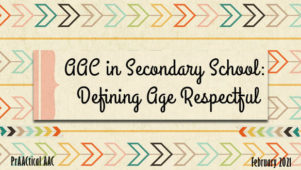
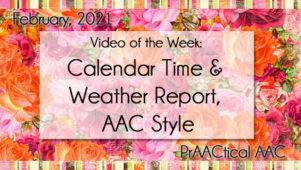
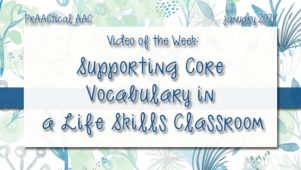
4 Comments
I have a high school student who just transitioned from the middle school where he had a great 1.1 attendant who helped him initiate conversations with his peers in a variety of situations.
Now that he is at the high school with a new inexperienced 1.1 and new teachers with no experience he is lonely and isolated.
Help, I need some strategies to help support him.
what is the app that mirrors the device of the AAC user?
I have a young adult who is 21 years old with visual impairment and intellectual disability. He has recently started exploring Touch Chat. I am recording small messages to motivate him to touch and hear the sounds and initiate conversations. He is enjoying using the iPad to express himself. What suggestions do you have for a 21-year-old with CVI and ID to use his iPad with the TouchChat AAC app?